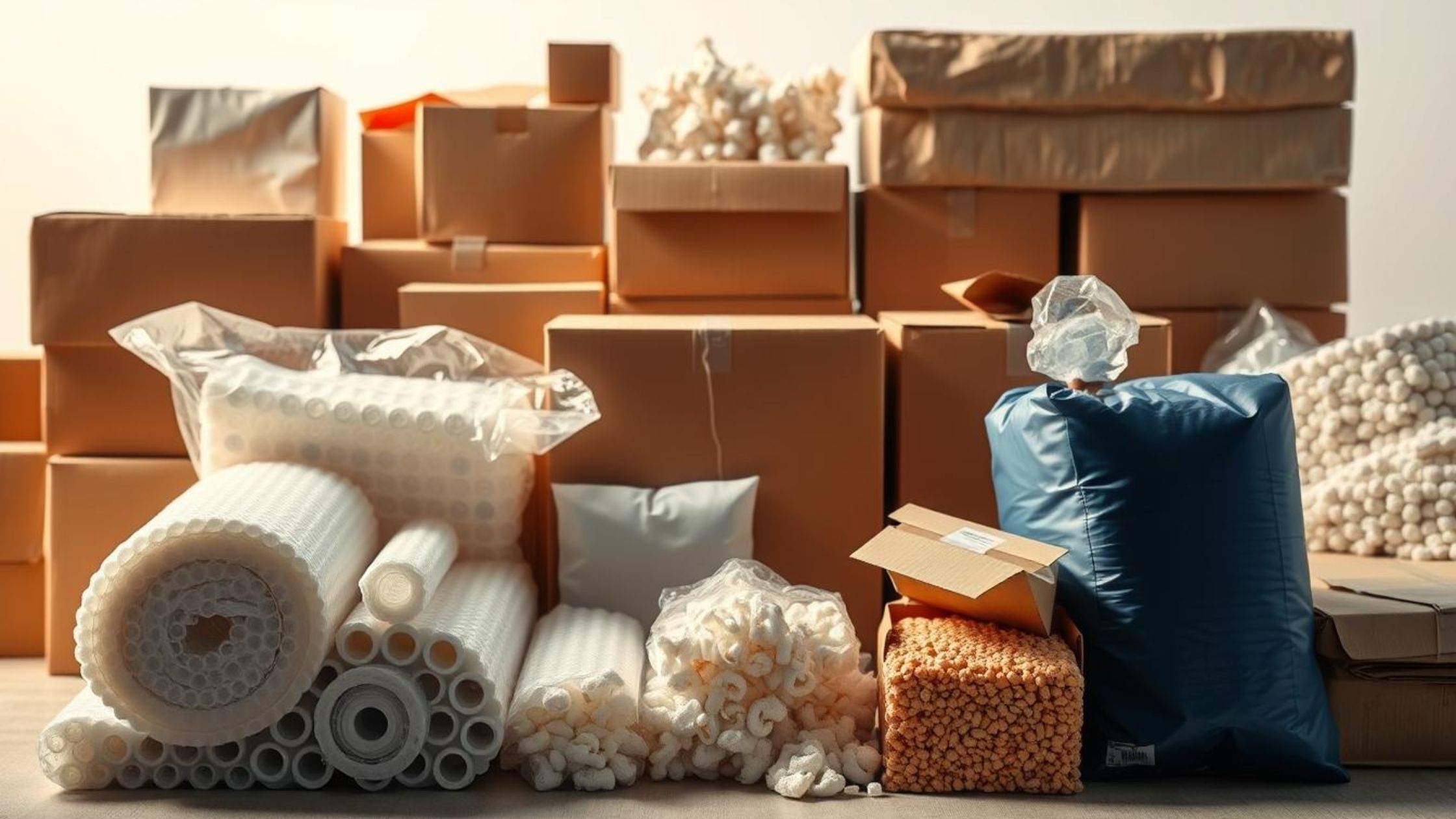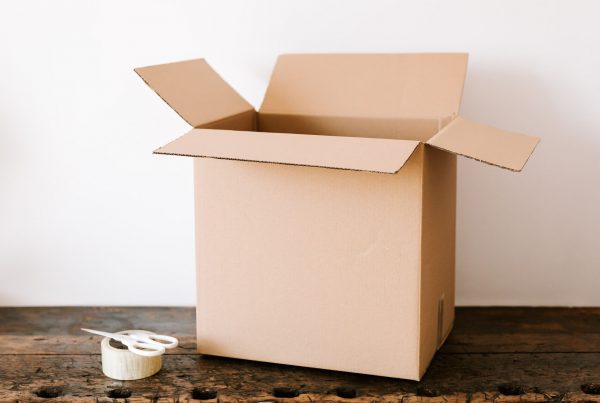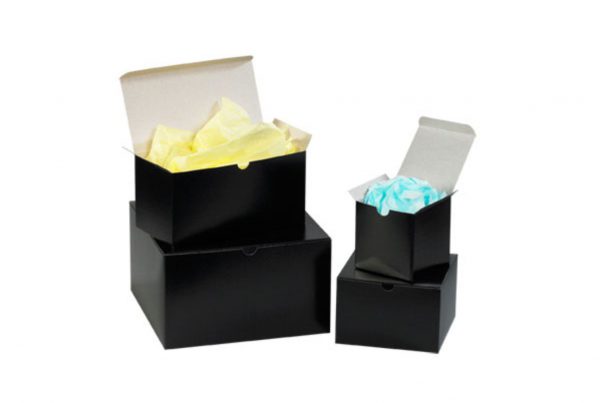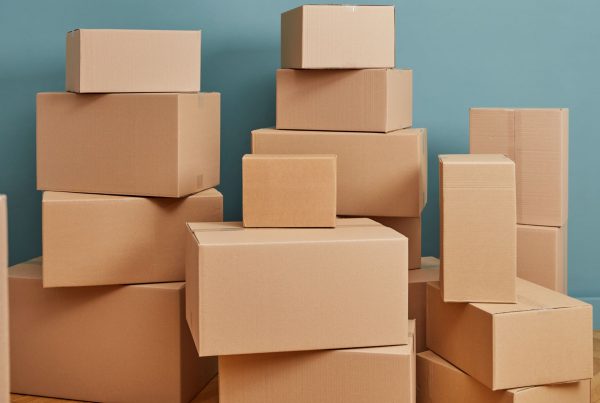Ever thought about how a tiny packaging slip-up can ding your business? In today’s fast-paced world, getting items to customers safely isn’t just a nice-to-have—it’s non-negotiable. Packaging protection is like a superhero cape for your products, shielding them from the bumps and bruises of shipping so they arrive in perfect shape.
With so many products taking a beating during transit, knowing how to protect them is a game-changer. It’s not just about keeping your items safe; it’s about building trust with your customers. Honestly, why risk your reputation when the proper packaging can make all the difference?
Key Takeaways
- Packaging protection is critical for preventing shipping damage.
- It boosts customer happiness and trust.
- Innovative packaging saves you cash on returns and replacements.
- Knowing your packaging materials is a must for safe shipping.
- The proper packaging can elevate your brand’s image.
- Eco-friendly options are available, and they’re excellent.
The Role of Protective Packaging in Shipping
Protective packaging is the unsung hero of safe deliveries. It’s like a force field, guarding against shocks, moisture, and other environmental hazards during transit. Whether you’re shipping delicate glassware or sturdy electronics, every product needs tailored care to avoid damage.
Understanding Its Importance
Let’s be real—protective packaging is a big deal. Materials like foam packaging and bubble wrap act like a cozy blanket for fragile items, soaking up impacts. Using the right materials doesn’t just save your products; it saves you from costly returns and keeps your customers smiling. Plus, it streamlines logistics, making your operations smoother and more cost-effective. Who doesn’t love that?
How It Safeguards Various Industries
From electronics to food, different industries lean on protective packaging to get the job done. For instance, electronics rely on anti-static materials to protect themselves from static electricity, while food services use insulated packaging to keep food fresh. These tailored solutions ensure sensitive goods arrive in top condition. Customizing your approach to fit your product’s needs is the key to reliable shipping.
Types of Protective Packaging Materials
Picking the proper protective packaging is like choosing the perfect outfit for your products—it’s got to fit just right. The market’s packed with options, from cushioning materials for fragile items to eco-friendly choices for the environmentally conscious.
Standard Materials: Foam, Bubble Wrap, and Peanuts
Here are some go-to protective packaging types and why they rock:
- Foam packaging: Perfect for delicate items, it absorbs shocks like a champ.
- Bubble rolls: Super versatile, they wrap items snugly, regardless of shape or size.
- Packing peanuts: These small items fill empty spaces in boxes, keeping items secure and reducing the likelihood of damage.
Environmentally Friendly Options
Eco-friendly packaging is having a moment, and for good reason. Brands now offer biodegradable shipping peanuts and recyclable bubble rolls. These options enable you to protect your products and the planet, demonstrating to customers that you care about sustainability without compromising on quality.
Benefits of Using Protective Packaging
Protective packaging is your ticket to delivering products in pristine condition. It’s not just about safety—it’s about giving your business a competitive edge. Let’s break down the perks.
Cost Savings from Reduced Damage
Good packaging is a money-saver. Damaged items mean incurring the cost of replacements and handling returns, which can add up quickly. Quality materials, such as shipping foam, reduce damage, thereby boosting your profit margins. It’s a simple fix with a big payoff.
Improved Customer Satisfaction and Brand Reputation
When products arrive without a scratch, customers take notice. Happy deliveries build trust and enhance your brand’s reputation. Satisfied customers are more likely to return, which is crucial for business growth. Who doesn’t want loyal fans raving about their experience?
Minimizing Returns and Replacements
Solid packaging means fewer returns. When customers receive precisely what they ordered, they’re less likely to return it. Fewer returns save you money and keep your shipping process running smoothly.
| Benefit | Description | Impact on Business |
| Cost Savings | Reduced expenses from fewer damaged items | Improved profit margins |
| Customer Satisfaction | Enhancing the delivery experience | Increased customer loyalty |
| Minimizing Returns | Lowering the number of product returns | Simplified logistics and improved efficiency |
Protective Packaging Solutions for Different Products
Not all products are created equal, and neither are their packaging needs. Choosing the right protective solutions ensures your items arrive safely, whether they’re fragile or perishable.
Handling Fragile Items
Fragile items like ceramics, glassware, or delicate electronics require extra care. Soft materials like foam packaging and bubble wrap are lifesavers, absorbing shocks to keep delicate items safe. With the proper setup, you can ship even the most breakable goods with confidence.
Specific Solutions for Electronics and Food Items
Electronics require protection from static and physical damage, so anti-static shipping foam or bubble inserts are essential. For food, it’s all about hygiene and temperature control. Insulated packaging keeps things fresh and safe during transit. By understanding what your products need, you can nail safe delivery every time.
Choosing the Right Protective Packaging
Picking the perfect packaging is like solving a puzzle—you’ve got to consider the product and the journey it’s taking. Getting it right means safe deliveries and happy customers.
Evaluating Product Types and Shipping Conditions
Consider your product’s weight, fragility, and size when selecting packaging. Shipping conditions, such as moisture or temperature swings, also matter. These factors help you decide how much protection your items need to arrive in one piece.
Sustainability Considerations
Sustainability is a significant concern these days, and customers appreciate brands that prioritize it. Eco-friendly materials, such as biodegradable shipping peanuts, meet that demand while keeping your products safe. Going green boosts your brand and reduces your environmental footprint—win-win!
Conclusion
Protective packaging is the backbone of safe shipping. It keeps your products safe from damage during transit, ensuring they arrive in perfect condition. By using the right materials and methods, such as packing peanuts or shipping foam, you can elevate your shipping game.
Excellent packaging doesn’t just protect—it builds your brand. Happy customers mean repeat business, which is key in a competitive market. Investing in top-notch packaging protection sets you up for success.
About The Boxery
Need reliable packaging solutions? The Boxery has you covered. They offer top-quality shipping supplies, from shipping foam to bubble rolls, tailored for all kinds of products and industries. Their focus on quality and customer satisfaction makes them a trusted partner for businesses seeking to enhance their shipping capabilities.
With The Boxery, you get expertise and innovative supplies that prevent damage and cut costs. Want to make your shipping more reliable? Explore their solutions and discover the impact they can have on your business.
FAQ
What are packing peanuts made of?
Packing peanuts are typically made from expanded polystyrene (EPS) or biodegradable materials. EPS is lightweight and great for cushioning, while biodegradable options dissolve in water, making them ideal for eco-friendly shipping.
How do I use foam packaging for fragile items?
Wrap fragile items in foam packaging sheets or use custom foam inserts that are specifically designed to fit their shape. This keeps them secure during transit.
Do bubble rolls provide better protection than packing peanuts?
Bubble rolls and shipping peanuts serve different purposes. Rolls wrap items tightly, while peanuts fill gaps in boxes. Using both together often gives the best protection.
Are there environmentally friendly shipping foam options?
Yes, you can find green shipping foam options, such as biodegradable or recycled foam. They offer the same protection but are more environmentally friendly.
Can I recycle packing peanuts and bubble wrap?
You can recycle packing peanuts, but check with your local recycling program first. Bubble rolls can often be dropped off at grocery stores or recycling centers—look for recycling symbols to confirm.
What type of protective packaging is best for electronics?
Use anti-static shipping foam or bubble wrap for electronics to prevent static and absorb shocks. Ensure the packaging fits snugly to keep items from moving.
How can I minimize returns due to shipping damage?
Invest in high-quality packaging protection specifically designed for your products. Use foam packaging, bubble wrap, and shipping peanuts correctly to ensure safe delivery and reduce returns.





Recent Comments